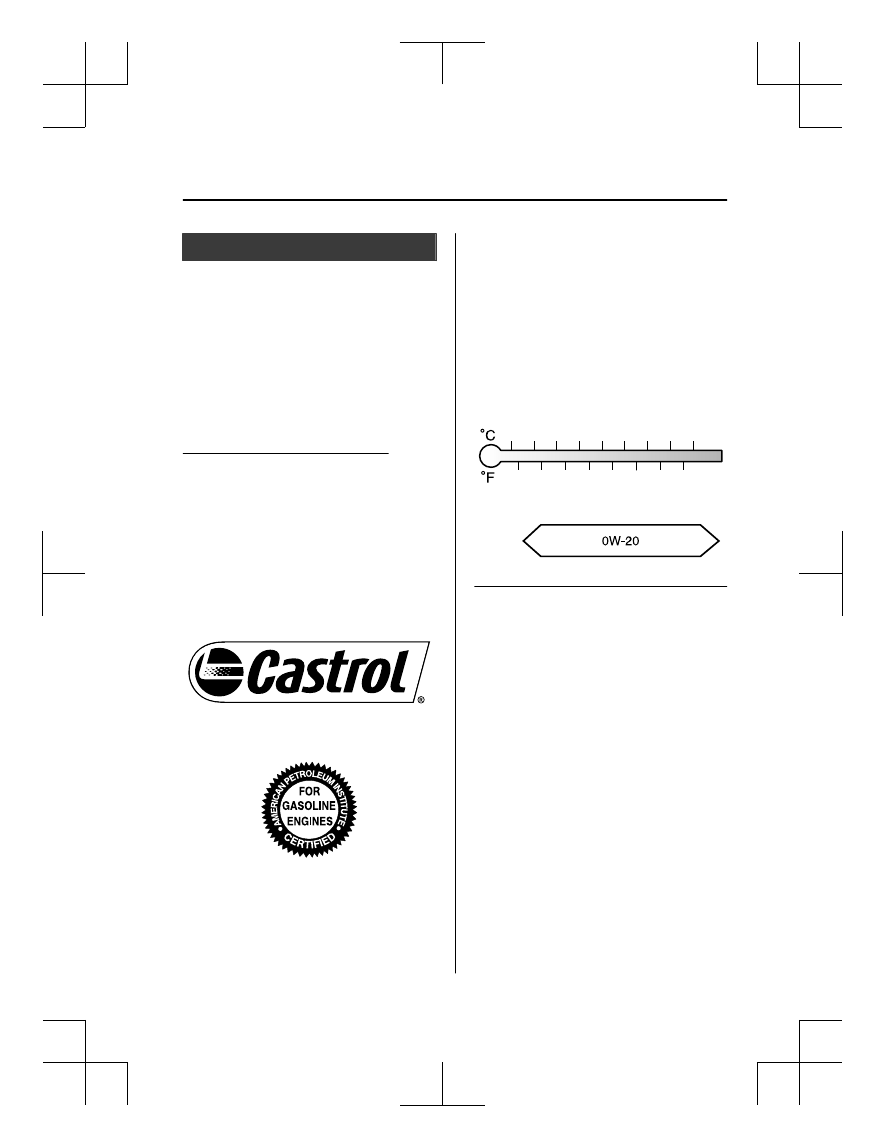Mazda 3 Hatchback (2018 year). Manual - part 28

Engine Oil
NOTE
Changing the engine oil should be
performed by an Authorized Mazda
Dealer.
Refer to Introduction (page 6-2) for
owner's responsibility in protecting your
investment.
▼ Recommended Oil
U.S.A., Canada, and Puerto Rico
Use SAE 0W-20 engine oil.
Mazda Genuine Oil is used in your Mazda
vehicle. Mazda Genuine 0W-20 Oil is
required to achieve optimum fuel
economy.
For maintenance service, Mazda
recommends Mazda Genuine Parts and
Castrol
®
(U.S.A. only).
(ILSAC)
Only use SAE 0W-20 oil “Certified For
Gasoline Engines” by the American
Petroleum Institute (API).
Oil with this trademark symbol conforms
to the current engine and emission system
protection standards and fuel economy
requirements of the International
Lubricant Standardization and Approval
Committee (ILSAC), comprised of U.S.
and Japanese automobile manufacturers.
80
60
40
20
0
–40 –20
30
100
40
20
10
0
–10
–20
–30
–40
Except U.S.A., Canada, and Puerto Rico
Use SAE 5W-30 engine oil.
Oil container labels provide important
information.
A chief contribution this type of oil makes
to fuel economy is reducing the amount of
fuel necessary to overcome engine
friction.
Maintenance and Care
Owner Maintenance
6-23
Mazda3_8GE4-EA-17F_Edition1
2017-4-7 11:59:21